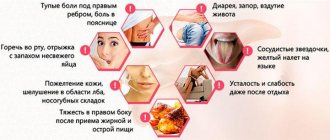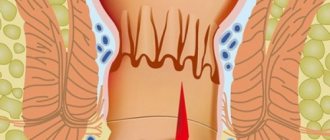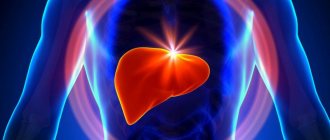With various diseases of systems and organs, organisms begin to show certain signs. Itching of the skin may indicate a variety of abnormalities. Very often, itchy skin occurs against the background of liver damage. The liver performs many functions. Thus, iron takes an active part in the process of digestion, metabolism, distribution of hormones, vitamins, and proteins. The main function of the organ is considered to be cleansing and protecting the entire body from toxins, heavy metals, and poisons. Every day, up to one hundred liters of blood passes through the gland, which is purified. If the liver does not have time to neutralize and remove toxins, diseases develop. One of the signs of liver damage is itchy skin. Why does it occur, and how to deal with it?
The main causes of skin itching in liver diseases
Itchy skin causes quite a lot of discomfort in a person. It can be general and local. In the first case, there is itching of the whole body. Local skin damage is characterized by symptoms in certain areas of the body. Itchy skin is mainly caused by inflammatory processes in the body, fungal infections, intoxication, poisoning, diseases of the liver, kidneys, and bile ducts.
Very often, itching of the skin is provoked by obstruction of the biliary tract of any nature. Thus, the most common disease causing itchy skin is cholestasis. This hepatic itching is explained by a violation of the outflow or formation of bile. There are intrahepatic and extrahepatic cholecystasis. Intrahepatic cholestasis develops due to the following diseases: cirrhosis of the liver, long-term use of certain medications, inflammation of the liver, and other diseases of the liver and gallbladder. With this phenomenon, there is insufficient formation of bile, or its excess.
Medications that cause cholestasis include hormonal drugs containing testosterone, estrogen, progesterone, erythromycin, tolbutamide, and many other antibiotics. With extrahepatic cholestasis, blockage of the bile ducts is diagnosed. This pathology can occur against the background of compression of the ducts from the outside, the presence of internal tumors, and neoplasms.
Other reasons for the development of skin itching include the following factors:
- Liver poisoning by alcohol. In this case, a large amount of toxins accumulates in the liver. Against this background, liver intoxication appears.
- Poisoning of the body with poisons, heavy metals, chemicals.
- Viral diseases. The virus can infect both the liver directly and other organs. Very often itchy skin appears with hepatitis. In this case, an excess of the level of bilirubin in the blood is observed, the accumulation of salts and bile acids, which penetrate into the general bloodstream and exit through the skin.
- Taking medications.
- Changes in hormonal levels.
- Damage to the liver by worms, helminths, and other parasites.
Itchy skin can be caused by a disease such as psoriasis. Psoriasis is considered a consequence and result of liver disease. Against the background of psoriasis, lesions appear on the surface of the skin. These are spots and plaques of pink and white colors. Initially, they appear on the head, elbows, knees, in the area of the eyes, eyebrows, and mouth. However, there is no pain from such tumors.
How to treat?
When itching occurs due to liver disease, treatment should be aimed at eliminating the root cause, that is, pathology of the liver or biliary system. After examination and diagnosis, the doctor selects treatment.
Therapy is selected individually, taking into account the diagnosis and many factors: the presence of pregnancy and related health problems, the age and gender of the patient, and others.
- If skin itching and stagnation of bile occurs due to diseases of the liver itself, then treatment is selected aimed at reducing inflammation in the liver tissue and ducts inside the liver.
- If the cause is acute viral hepatitis, then the doctor prescribes appropriate antiviral treatment.
- Primary biliary cholangitis requires long-term treatment with ursodeoxycholic acid. The dose and frequency of administration are determined by the doctor after confirming the diagnosis.
- If the presence of parasites in the liver is confirmed, treatment tactics are determined by the type of parasite, the presence and number of cysts in the liver.
- When the bile ducts are compressed from the outside or blocked from the inside (for example, by gallstones), surgical intervention is usually required. The range of surgical interventions is wide, taking into account many causes and surgical techniques. However, they are all aimed at one thing: restoring the patency of the ducts, which will help, among other things, eliminate skin itching.
Cholestasis
Since cholestasis is considered the most common cause of itchy skin, the disease is worth considering in more detail. When the bile ducts are blocked, there is poisoning of the blood that circulates throughout the body. Such damage to the liver and bile ducts is accompanied by itching of the palms and feet. Then the itching spreads throughout the body. Bile acids begin to poison the entire body.
The functions of bile acid are as follows:
- Breakdown of fats, their rapid absorption;
- Preventing stagnation of food in the gastrointestinal tract;
- Relief from constipation;
- Absorption of fat-soluble vitamins;
- Regulating blood cholesterol levels;
- Supports normal intestinal microflora.
During normal liver function, bile acids are excreted along with bile. This avoids acids entering the blood, as bile acids are very toxic. If diseases of the liver and ducts are observed, their blockage occurs. Bile does not come out, but acids actively penetrate into the general bloodstream.
It is this phenomenon that most often provokes not only itchy skin, but also rashes of various types throughout the body. All this appears against the background of cholecystitis, cholangitis, cholelithiasis. If you ignore this problem, intoxication of the body will continue. All this leads to serious consequences. In the process of scratching the skin, wounds are formed that allow various infections to pass through. Further, the body becomes covered with ulcers and pimples. And then the infection affects all systems and organs of the body. Treatment of such a pathology will be complex and lengthy.
Causes of itching
If the skin begins to itch, the first thing a person does is consult a dermatologist. Since such problems often arise due to damage to the body covering itself. If the dermatologist does not detect problems in his profile, the patient should consult a general practitioner.
The doctor will draw up a complete clinical picture, including problems with the gastrointestinal tract, and prescribe additional examination.
Often itchy skin due to liver pathologies is accompanied by the following symptoms:
- Diarrhea after eating fatty foods;
- Pain in the area of the liver projection;
- Long-term constipation;
- Heartburn and belching;
- Unpleasant bitter taste in the mouth in the morning.
The presence of one of the symptoms indicates pathologies of the digestive organs, which include the liver. However, itching does not appear due to problems with digestion of foods.
It is important to know!
Its cause is a violation of the neutralizing function of the liver with the simultaneous accumulation of toxins or bile acids in the body.
How to recognize liver itch?
Itching can occur for various reasons. These can be either liver diseases or many dermatological pathologies. Therefore, for proper treatment it is necessary to carry out a correct, complete diagnosis. Cholestatic or hepatic itching is characterized by some symptoms that are characteristic only of pathology of the liver and bile ducts.
So, in the case of diseases of the liver and bile ducts, the itching persists on an ongoing basis, long-lasting, and severe. There is no specific localization of such itching. It can itch in different places. More often, it intensifies at night, which provokes insomnia in the patient. In this case, using antihistamines does not bring a positive result. Although these drugs are used to eliminate itching and burning of the skin.
Also, liver diseases, in addition to the characteristic itching, will be accompanied by the following symptoms:
- Jaundice;
- Pain in the right hypochondrium;
- Mild redness of the skin;
- Rashes on the body, acne, pimples;
- Unpleasant odor from the mouth;
- Constipation, diarrhea;
- White, yellow coating on the tongue.
If there are no skin rashes, an allergy is most likely occurring. If pimples or blackheads appear on the patient’s face, this is liver disease. As a rule, when skin itching occurs, the patient visits an allergist or dermatologist. Doctors may prescribe treatments that are initially incorrect. This is how precious time is lost. After all, any liver damage is dangerous not only to human health, but also to his life.
Differences between ordinary itching and hepatic itching
For many people, the skin with liver disease is subject to extensive irritation. Sometimes it itches without a clear location.
Skin irritation due to liver problems is often painful and tends to last for a long time. Other features that help distinguish manifestations of liver itching from normal scratching are:
- the sensations are very intense;
- increased discomfort at night;
- scratching does not lead to relief;
- rashes on the face, limbs, torso.
Skin manifestations of liver diseases take on various forms. They may take the form of spots, bruises, or stars. Problems with the liver are often accompanied by jaundice (yellowing of the skin and mucous membranes), pain under the ribs on the right, and dyspeptic disorders.
An important feature of hepatic itching is considered to be the low effectiveness of antihistamines, which alleviate the patient’s condition in other forms of skin irritation.
What to do if you have itchy skin due to liver disease?
To get rid of such skin itching, it is very important to eliminate the primary pathology, and not to smooth out the symptoms. Firstly, it is worth making a comprehensive diagnosis. Initially, the patient needs to see a therapist. It is this doctor who, during the initial examination, will refer you to a more specialized specialist. And the gastroenterologist will prescribe a set of tests. This will include a general and biochemical blood test, liver tests, and a general urine test. It is imperative to conduct an ultrasound examination of the abdominal organs. This diagnostic method will allow you to fully assess the condition of the liver and bile ducts, identify their blockage, and the main cause of this pathological process.
Only after receiving the results of all tests is the most effective treatment prescribed. Initially, the patient needs to cleanse the body of toxins. Enterosorbents are used for this. The most effective are:
- Enteros gel;
- Polysorb;
- White coal;
- Atoxyl;
- Smecta.
In the treatment of cholecystitis and cholangitis, antiphlogistic agents are used. They help relieve pain. If the cause of itchy skin is hepatitis, it is worth treating with antiviral drugs. To normalize the synthesis and excretion of bile acids, bile, you need to consume bile acid derivatives. These can be Cholestipol, Cholestyramine, Allohol.
Drugs such as hepatoprotectors help restore full liver function and restore the level of healthy hepatocytes. These agents promote the regeneration of liver cells. There are several types of this group of drugs: animal origin, plant origin, phospholipids, amino acids, milk thistle-based preparations. Only the doctor determines which drug is suitable in a particular case. The following products are the most popular, effective and versatile:
- Essentiale forte N;
- Karsil;
- Phosphogliv;
- Liv-52;
- Galstena;
- Heptral.
The course of taking hepatoprotectors is quite long. So, you need to take the funds for 2-3 months. They are acceptable for use for the purpose of prevention. In this case, it is enough to follow a course of 1 month. In severe cases, surgery is required to treat the liver and bile ducts. This is the only way to clean the ducts and restore their normal patency. It would not be amiss to add multivitamin complexes to complex therapy. After all, vitamins B and A play an important role for the normal functioning of the liver. In general, itchy skin can occur due to liver damage, accumulation of bile and bile acids. And simple antihistamines will not help. If itching occurs, it is better to immediately seek help from a doctor.
Prevention
It is easier to prevent any disease than to treat it later. Body itching due to liver disease is the body's way of communicating that there is a problem. Taking good care of your body helps you avoid such troubles.
Some diseases of the liver and bile ducts that lead to itching cannot be prevented in any way. These include congenital structural anomalies, diverticula, biliary cholangitis and some others. However, you can prevent the development of many diseases that lead to hepatic skin itching.
To reduce the risk of developing diseases that lead to cholestasis:
- Get vaccinated against hepatitis B in a timely manner;
- use condoms to protect against sexually transmitted diseases (including hepatitis and);
- undergo any medical planned and cosmetic procedures only in those institutions where high-quality sterilization of instruments is carried out;
- Take medications and dietary supplements only as prescribed by your doctor. Do not self-medicate;
- observe personal hygiene rules and do not eat raw meat and fish to avoid infection with parasites;
- during pregnancy, undergo timely examinations and take tests prescribed by your doctor;
- If there are changes in biochemical blood tests that indicate liver dysfunction, consult a doctor and undergo an examination, even if there are no complaints yet.
And these rules will help people be healthy, regardless of the presence or absence of itchy skin:
- Follow the rules of healthy eating.
- Do not abuse, but rather completely give up alcohol, smoking and other bad habits.
- Reduce emotional stress as much as possible.
- Give yourself regular physical activity commensurate with your capabilities.
- Get regular medical examinations and follow your doctor’s recommendations.
You can contact the hepatologist in the comments. Don't hesitate to ask!
This article was last updated: 05/23/2020
Didn't find what you were looking for?
Try using search
doctor or administrator.
Read the dictionary of terms.
Expert author: Gastroenterologist-hepatologist Ekaterina Kashukh










